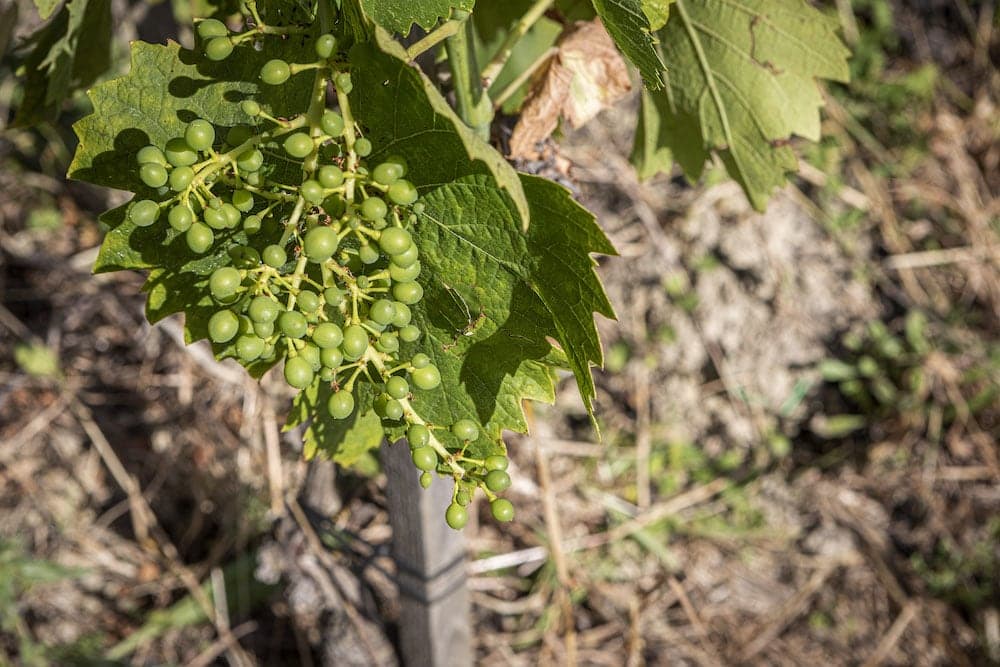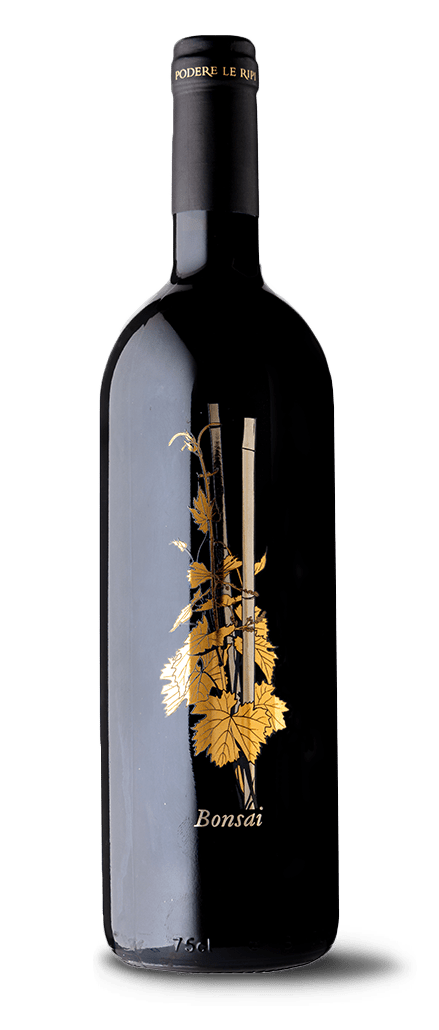The Bonsai Vineyard, where vines are planted only 40 centimeters apart, with extreme density.
“A vineyard can produce good grapes only after 35 years”. That’s what an old winegrower in Burgundy once told me. I began wondering whether I had to wait until I was ninety to understand what my young vines could produce. The answer to my questions turned out to be simple. I had decided to try something new and innovative: a vineyard with such extreme vine density that they would push each other to grow through many different geological layers in a shorter time span. This gave the plants but one choice: compete for survival by digging deeper with their roots to live.
Back then everyone told me that I was crazy and that the plants would have simply died.
The first few years of plant training were hard, we devoted a long time looking after these small vines, and keeping the soil at its best. But such work positively resulted in a low mortality rate which capped at 8%.
We provided every plant with a supporting acacia wooden cane and grew them using the goblet training system. Two and a half years later, with their third bud, we made the very first barrique of the Bonsai Sangiovese 2007. I could not believe that I was actually tasting wine produced from such a crazy vineyard.
I had thought for long about what the old Burgundian grower once had said to me, but in the end, I concluded that nature repeats itself by applying the same mechanisms in its every living being. A plant that has been cared for too much by human technology and interaction will grow to become lazy, and on the contrary, a vine that needs to work for its own survival does not have any time to waste. Against laziness, nothing is as effective as hunger.
When we harvested the Bonsai, we were excited: we could not believe that this crazy experiment had worked.
Often soils are made of different geological characteristics, each completely different from the other. A root that is capable of exploring vertically the soil where it is growing, will then enjoy heightened complexity and higher amounts of water.
In each one of our vineyards, we attempt to promote such deep “exploration” of our soil, trusting that, if our aim is to read and interpret the land through the glass, the roots are the main tool to do so.

In time, we’ve been implementing specific systems for this peculiar vineyard.
Following the example of our vines that adapted to specific growth conditions, we had to follow suit and do the same in terms of how we manage the vineyards to aid the plants in their survival. We’ve therefore implemented specific practices adapted to this specific vineyard.
In regard to pruning, we’ve understood that we could not expect this vineyard to produce the same quantities of a more regular one. The plants’ effort was already a liability to begin with, therefore we identified a smaller amount of gems to keep, setting the goblet’s height at 40-50cm from the ground, with a single spur with 2 or 3 productive gems. Production amounts vary year after year, although occasionally some plants do not produce any bunches due to adverse weather conditions. But typically, we harvest between one to two bunches of grapes per plant every year.
The health state of the soils has been the main obstacle from the beginning. Our soils are mainly formed of clay and limestones therefore they compact easily but their physical structure finds it hard to construct and texturize.
A vineyard with this number of plants requires abundant replenishment of organic compounds. This is done by utilizing manually spread manure, and carrying out a soil decompaction of the upper layer, at a maximum depth of 30 cm. Afterwards, we apply a rich amount of straw (pacciamatura) to defend plants from hydric stress and to reduce soil compaction. All of this is done in addition to biodynamic preparations.

Bonsai’s journey in the cellar
After several harvests, we’ve finally understood how to best interpret the grapes coming from the Bonsai vineyard
The crushed and destemmed must spontaneously ferments in open tonneaux placed vertically. The wild fermentation lasts approximately two weeks, accompanied by manual punching downs. As soon as sugars run out, we separate the wine from the skins, this must is normally enough to fill up two tonneaux and since the quantities are always very small, we cannot use bigger oak barrels. The aging lasts 15 to 18 months trying to transfer it the least possible number of times and always using older barrels. The bottling is often manual and once bottled it will age another 18 months.
As of today, we have a total of 1.4 hectares of Sangiovese Bonsai, with adult plants that produce around 200 grams of grape each. From the first harvest until now we feel comfortable in saying that we’ve created something truly unique, something that we’ve grown very fond of. For us, it has been a research study, and in more than one instance we’ve observed and examined the soil’s profile in-depth, to understand roots’ behavior. Roots are currently three meters deep, around twice as much as other vineyards planted with a regular amount of vines. This is undoubtedly an encouraging sign.
Having such high-quality Sangiovese here in Montalcino that is not included in DOCG Brunello Appellation is definitely not ordinary. To us, this wine is first and foremost a Sangiovese of Montalcino, putting aside the “different” practices this vineyard requires. We will keep studying it and keep vinifying its grapes on their own (100% sangiovese from Bonsai vineyard) and that is done because the unique visual impact transmitted by this vineyard when visiting it is entirely translated into every sip of this wine, and we could never call it any other way than “Bonsai”.

Book your visit
Fill the form and we will contact you soon!